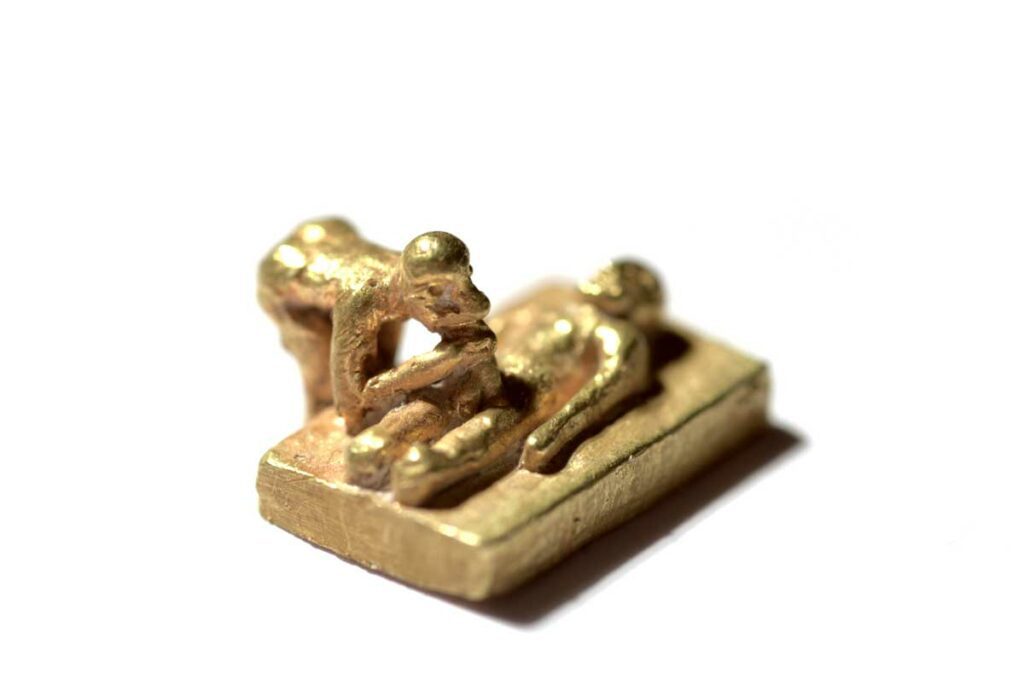The title of the 32nd Bienal de São Paulo, INCERTEZA VIVA (Live Uncertainty), proposes to look at notions of uncertainty and the strategies offered by contemporary art to embrace or inhabit it.

Installation view of Lyle Ashton Harris, Once, Once (2016).
.
Tucked away on the third floor of the Oscar Neimeyer–designed biennial pavilion in São Paulo’s Ibirapuera Park is the installation Once, Once (2016) by the New York-based artist Lyle Ashton Harris.
Across a selection of photographs and moving-image works, the artist chronicles the Culture Wars of the 1980s and 1990s. This deeply moving presentation imaginatively recasts historical material to reflect on personal and collective entanglements with multiculturalism, feminism, and racial and LGBTQ activism. The narratives embedded here are startlingly current. If we look around us today, we find a similar landscape of embittered politics and socio-economic upheaval. This reality has certainly not escaped the biennial itself, which was developed alongside deep economic and political ruptures in its host country. Such internal struggles are certainly not unique to Brazil. Across the globe we find countless examples of shifting political and social orders, particularly in relation to the rise of right-wing populism. It is no wonder, then, that some commentators have remarked that we are living in regressive times. But this uncanny return of battles that we believed an earlier generation had resolved reveals that they remain “an unfinished conversation,” as cultural theorist Stuart Hall famously remarked about the project of multiculturalism.

Carlos Motta, Figure from the installation Towards a Homoerotic Historiography, 2013, courtesy of 32nd São Paulo biennial
The 32nd São Paulo biennial – Incerteza Viva/Live Uncertainty – shines a light on the numerous uncertainties of contemporary life as they pertain to themes of class, race, gender, sexuality, ecology, and technology. The most successful works in the show interrogate our perceptions of history and its closed narratives, highlighting the stark continuities between past and present. Building on matters teased out in Ashton Harris’s piece, Carlos Motta’s installation Towards a Homoerotic Historiography (2013–16) reaches further into the depths of historical complicity. The work includes the project Nefandus (2013–16), a collection of gold objects depicting various severed body parts and figures engaged in intimate acts. Presented within the language of a museum display, this piece strives to highlight Western colonialism’s suppression of indigenous cultures and its perversion of notions of gender and sexuality through the imposition of Christian beliefs. Motta thus forces us to think about current gender and sexuality debates not within the narrow lens of our time but through the arc of history.
Incerteza Viva/Live Uncertainty has clearly bucked the trend of overly curated biennial exhibitions by opting for an open floor plan that gave over a sizable amount of space to each artist. The exhibition is at its strongest when connections between works come into view. One example of this is the conversation between Charlotte Johannesson’s beautifully crafted tapestries and Hito Steyerl’s bombastic multimedia installation Hell Yeah We Fuck Die (2016). Johannesson’s work – which one suspects will be a revelation to many visitors – demonstrates the intersection of analog and digital technologies in the artist’s craft-based practice and her deep commitment to addressing issues of her time through this medium. For her part, Steyerl’s compilation of videos presented within a parkour (free-running) training circuit comments on the propagation of war and violence in our daily lives through technological innovation.
Elsewhere, filmmaker Leon Hirzeman’s documentary films are put into dialogue with the work of conceptual artist Pope.L to explore themes of labor, capital, and class. Shot in the 1970s, Hirzeman’s works depict rural labourers singing work songs in the cocoa and sugar plantations of Bahia. These poetic works capture the aural traditions of Brazil’s working class rural communities. Pope.L’s Baile (2016) is a wall drawing-cum-sculptural assemblage that acts as a score for a four-day long, twenty-four-hour performance of the same name.
.Performed on the streets of Sao Paulo during the first few days of the biennial, a foursome of performers march and dance across sites of socio-economic disparity across the city. A pair of performers wears kid-sized ball costumes and death masks that could be seemingly sourced from a run-of-the mill costume shop while the other pair is dressed in all white tracksuits. With a soundtrack of audio samples emanating from their backpacks, Pope.L’s troupe evokes Brazil’s tradition of debutant balls, its popular culture and processional practices. Within this conflation of popular forms, Pope.L points to the city’s overarching class and cultural divides and how they affect one’s experience of the city.
It was refreshing to experience an exhibition that responded so astutely to its immediate context, one that privileged art’s and artists’ connectivity to the deep questions currently being faced by societies across the world. Incerteza Viva/Live Uncertainty demonstrates the essential paradox of life: to live is to be in the moment, to treasure the riches of the earth and those with whom we are fortunate to share it. But in our current time, as it has been in the history of human civilization, to live is also to struggle for rights and values that are paramount to individuals as well as society at large; to live is to contend with the inherent violence of the world.
Yesomi Umolu is Exhibitions Curator at Reva and David Logan Center for the Arts at the University of Chicago
More Editorial